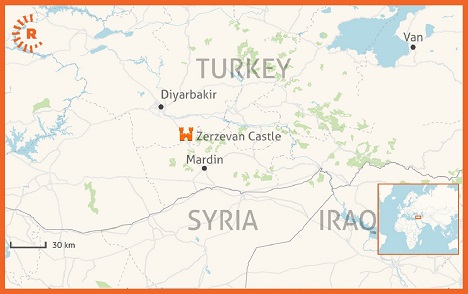Ancient Roman castle in Turkey added to tentative list of UNESCO World Heritage Sites

ERBIL, Kurdistan Region — An ancient Roman garrison in the Kurdish province of Diyarbakir, southeast Turkey has been included on a tentative list to be considered as a UNESCO World Heritage Site, Turkish state media reported on Friday.
Zerzevan Castle, also known as Samachi Castle, is a historic site in Diyarbakir province. Dating back to the third century, the castle was once a Roman military base.
The list of World Heritage sites was created by the United Nations Educational, Scientific and Cultural Organization (UNESCO) in 1972 to identify cultural and natural sites of "outstanding universal value."
The organization works to encourage states to protect heritage sites through the World Heritage Convention.
As a signatory to the convention, Turkey can submit sites to be considered to the five-stage World Heritage list. Ankara added six more places to the organization’s tentative list on April 14, bringing the total number to 83. Sites cannot be considered as nominations on the official list of heritage sites if they have not been included on the tentative list. 
The new additions also include the historic town of Beypazari and Koramaz Valley in Anatolia.
Ankara now to has convince UNESCO that the site is “of outstanding universal value and meet at least one out of ten selection criteria” to be added to the World Heritage List.
The criteria include representing “a masterpiece of human creative genius,” and “an outstanding example of a type of building, architectural or technological ensemble or landscape which illustrates (a) significant stage(s) in human history.”
Zerzevan Castle is described as “one of the best-preserved Roman garrison[s] in the world with its underground and surface structures” on the UNESCO website.
“Zerzevan Castle was a military settlement. The artifacts uncovered by the excavations provide important information about the Roman soldiers, civilians' daily lives and the battles. There are architectural remains such as observation and defensive towers (southern tower), churches, administrative building, arsenal and rock altar in the southern area of the settlement surrounded by city walls.”
Aytac Coskun, head of digging activities in the castle, told Anadolu Agency that the inclusion of the castle to the list motivates Turkish authorities to continue excavations at the site.
"Excavation and restoration works are to continue after getting over the coronavirus epidemic," he said.
